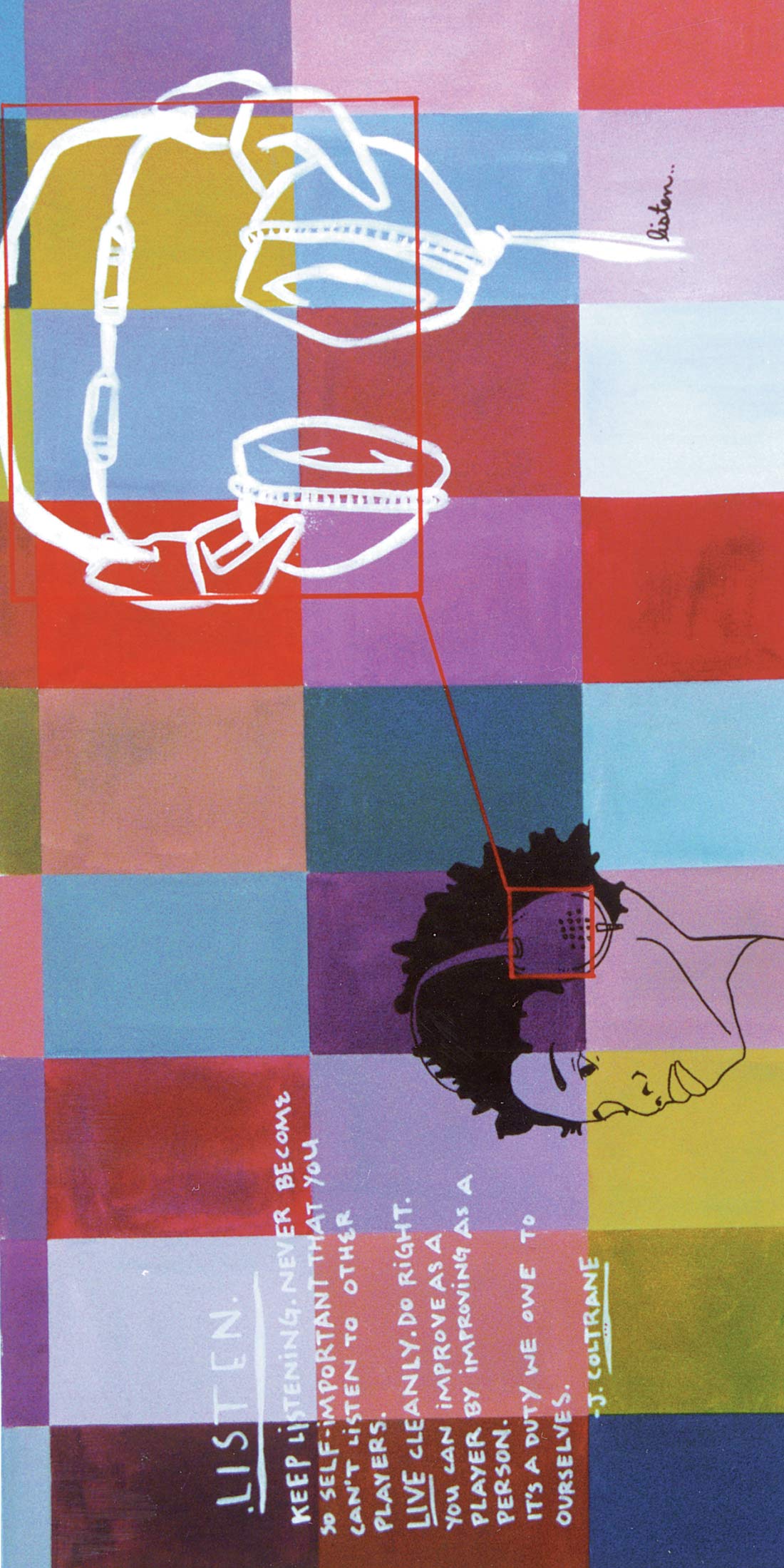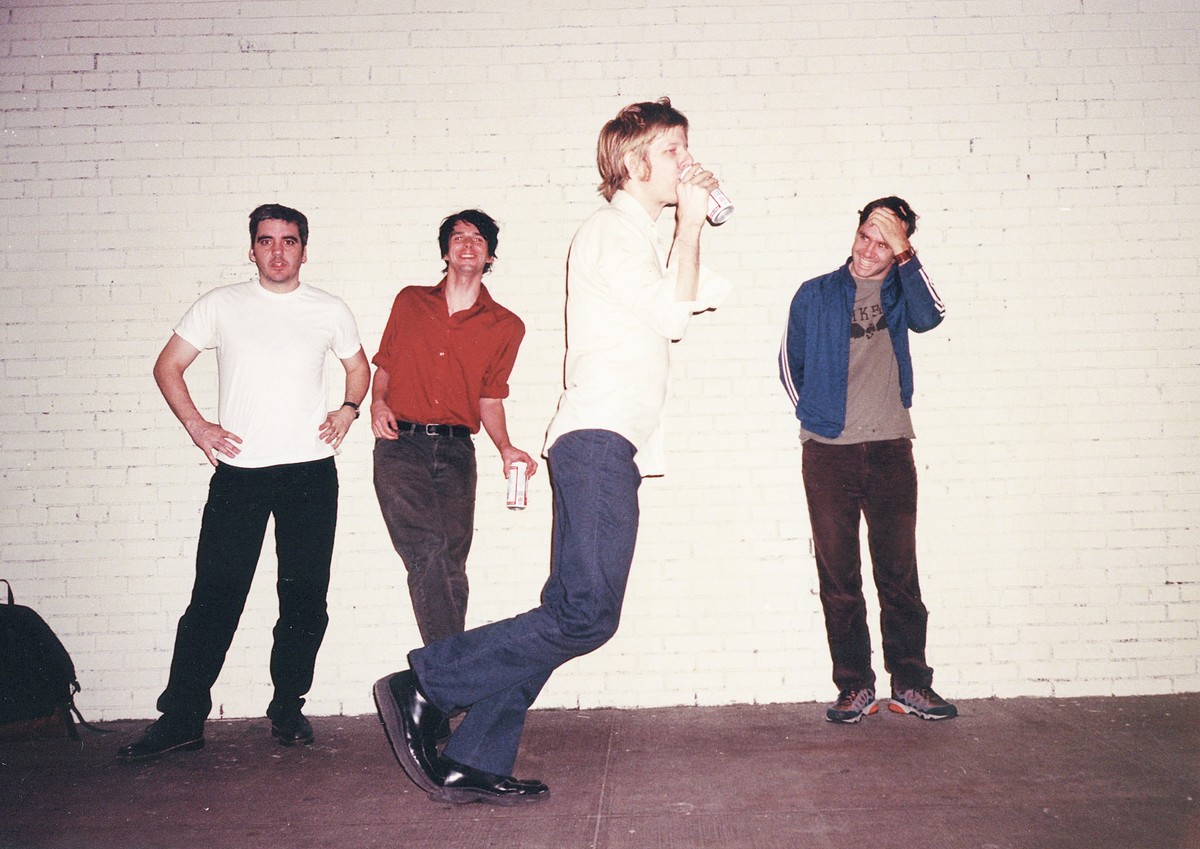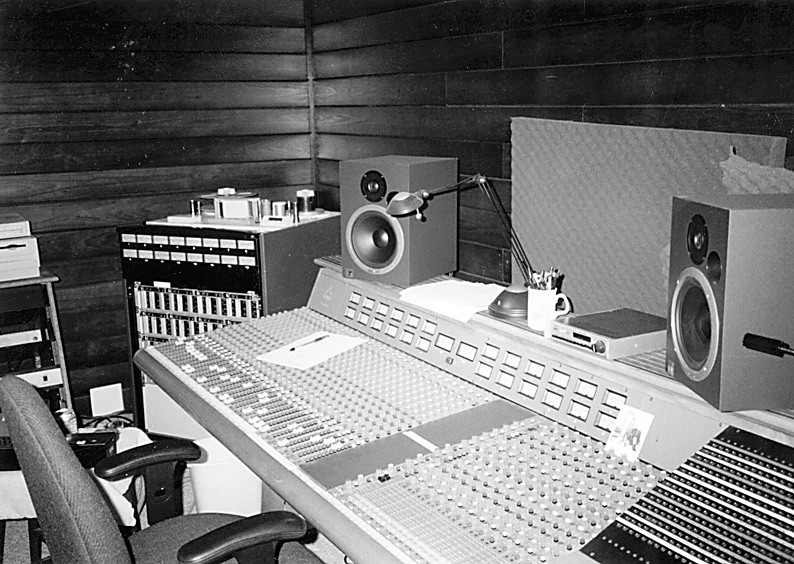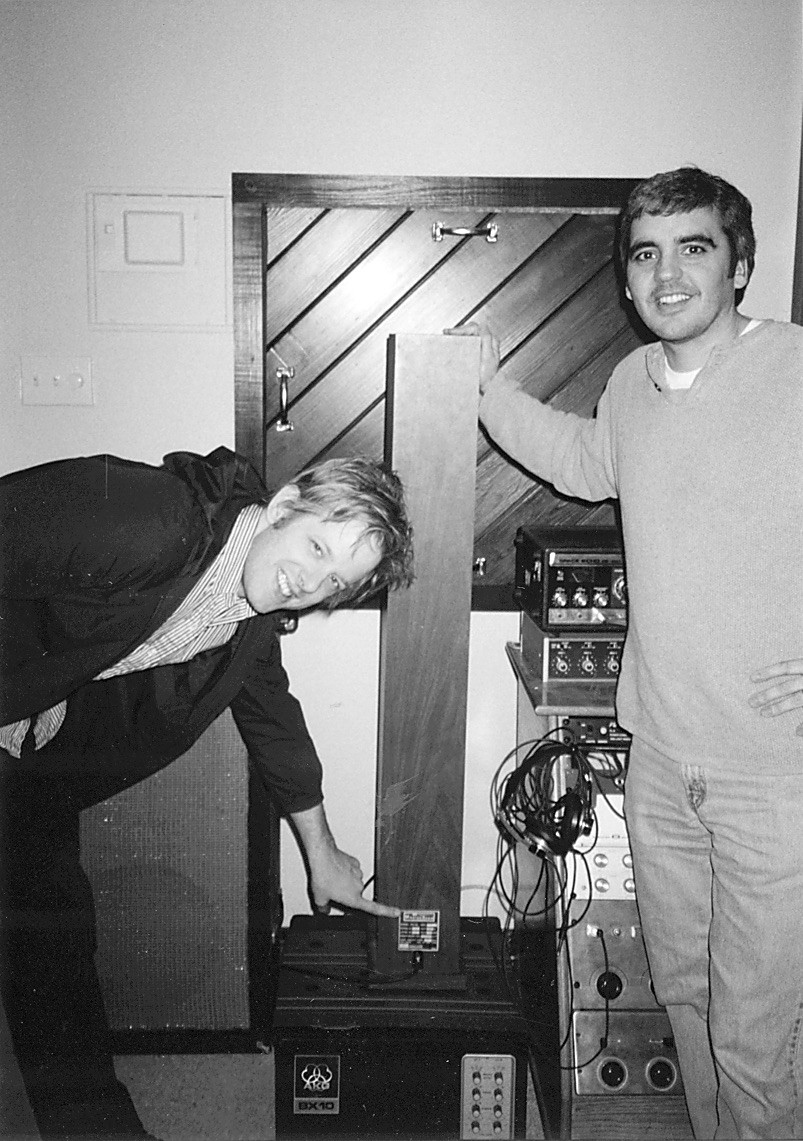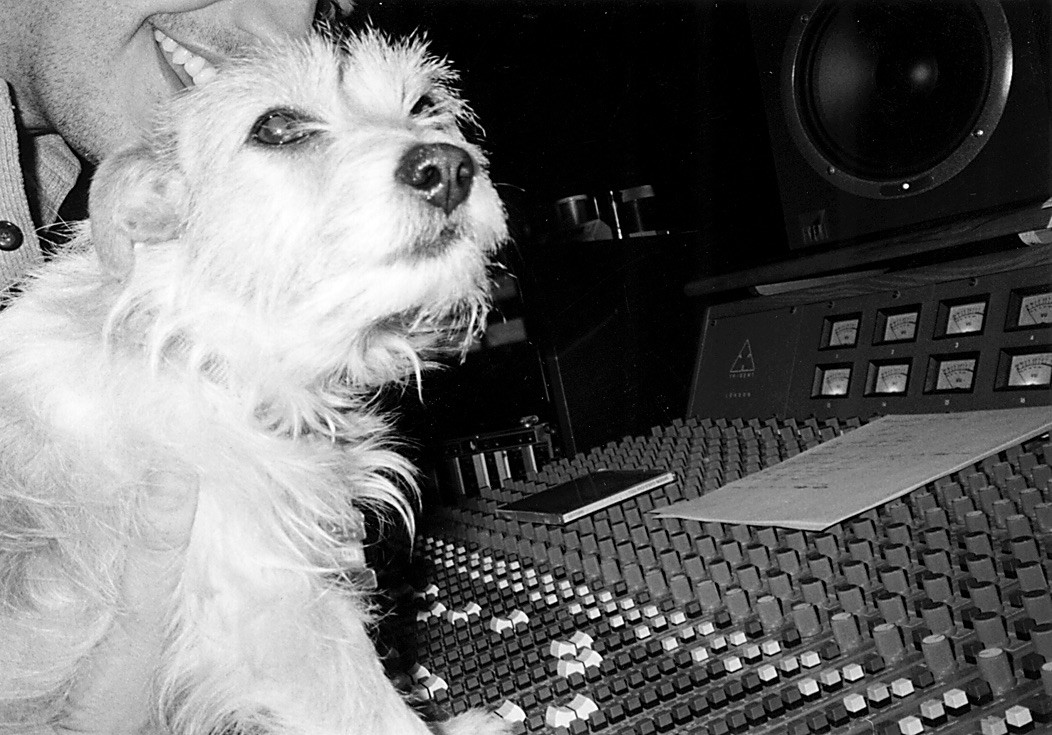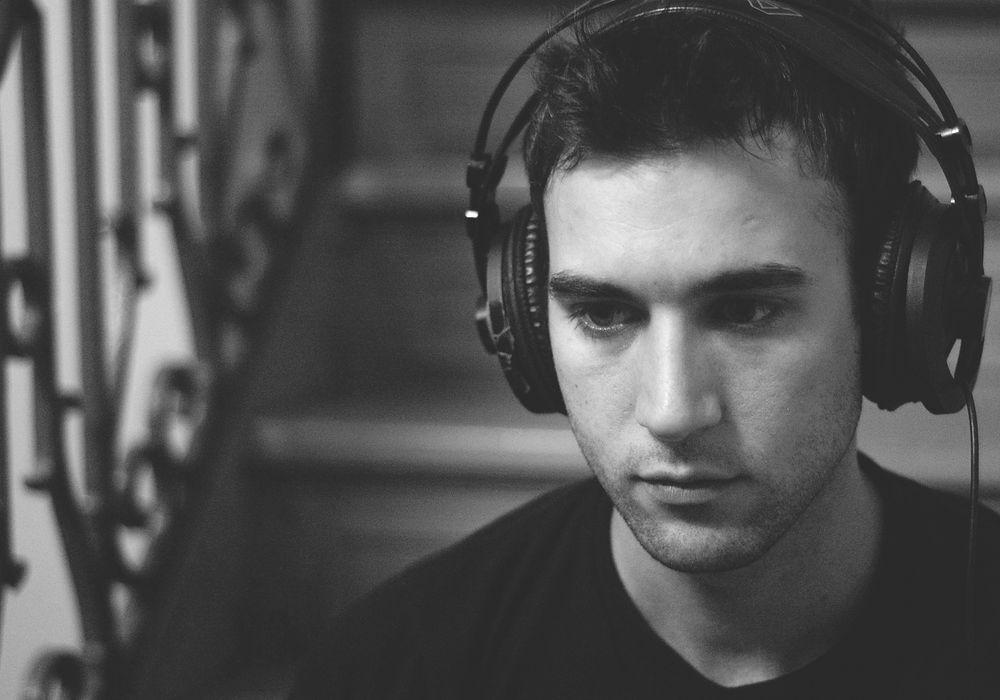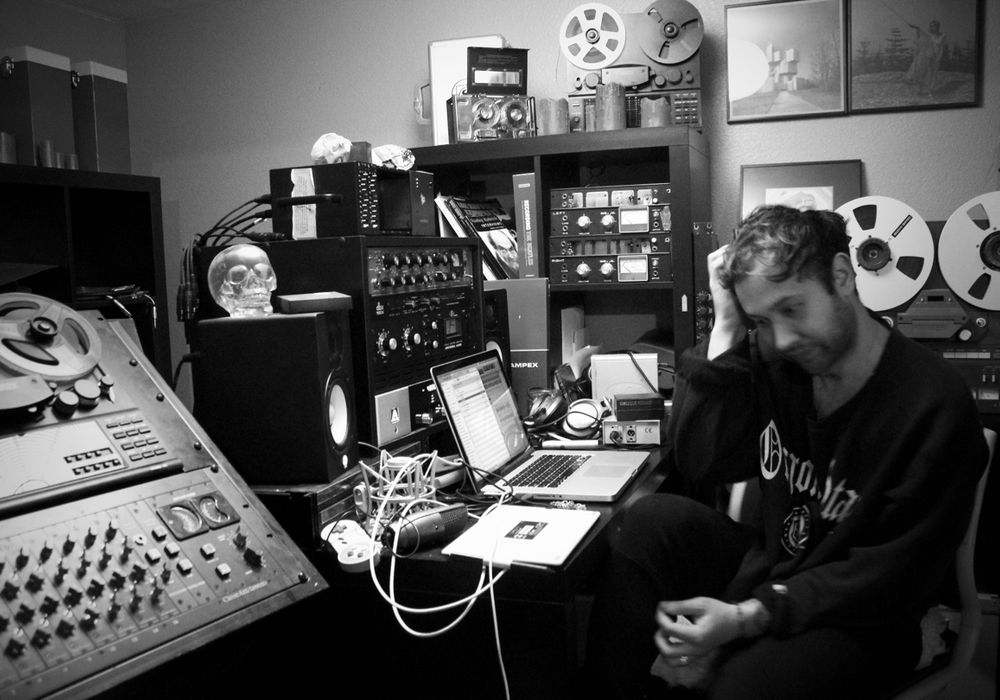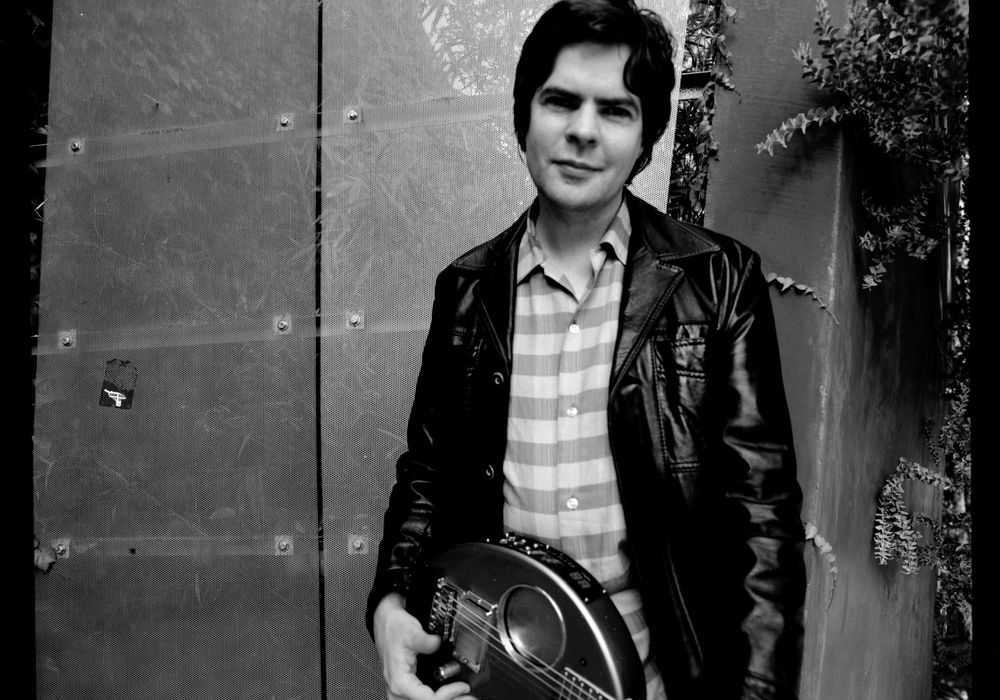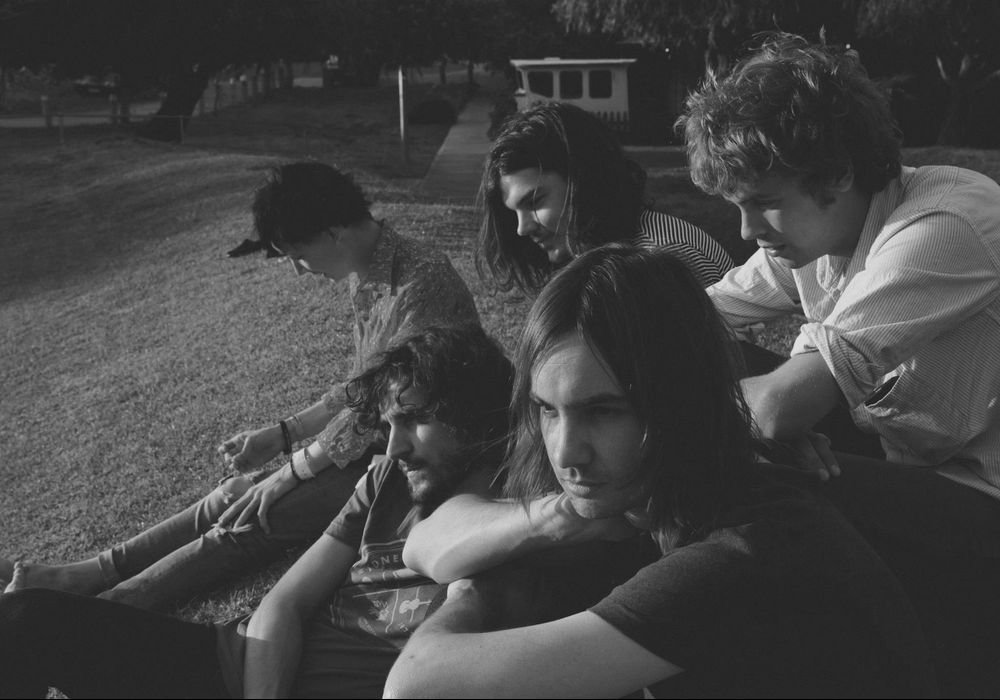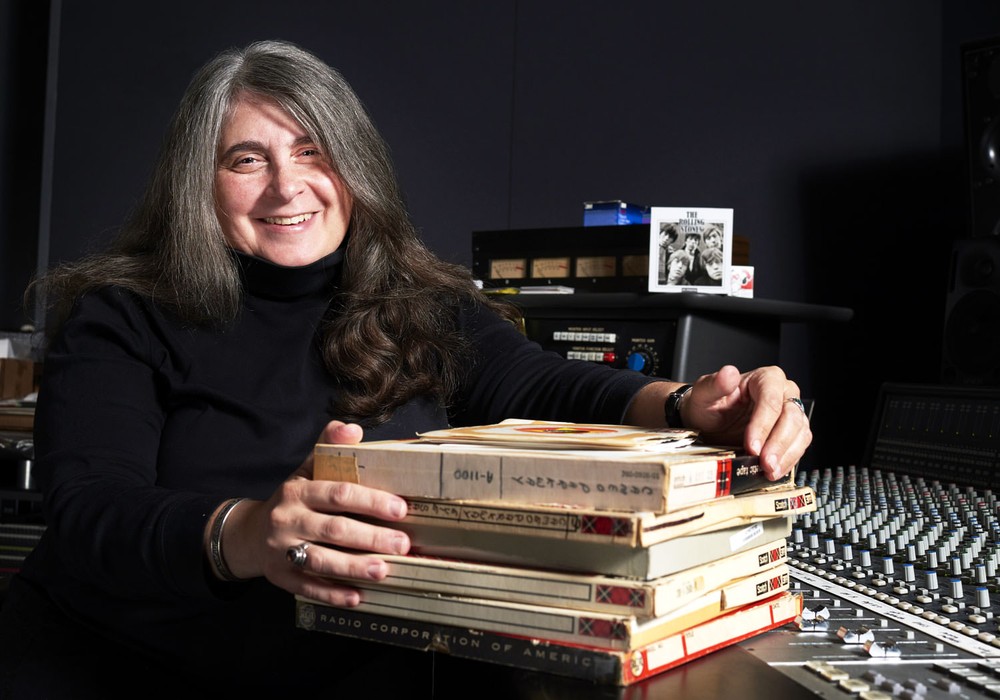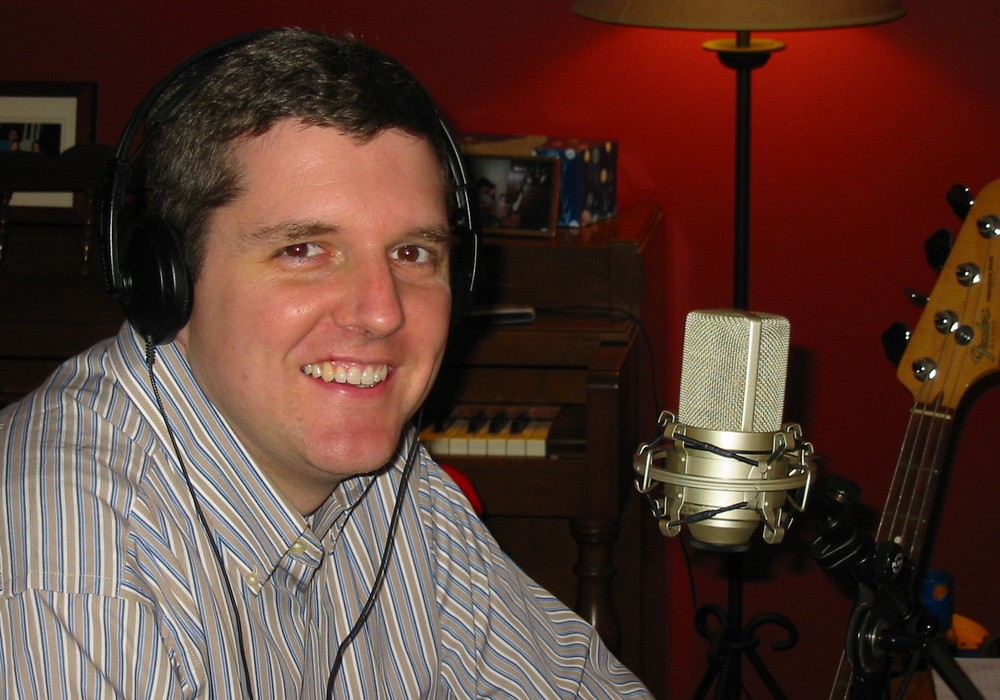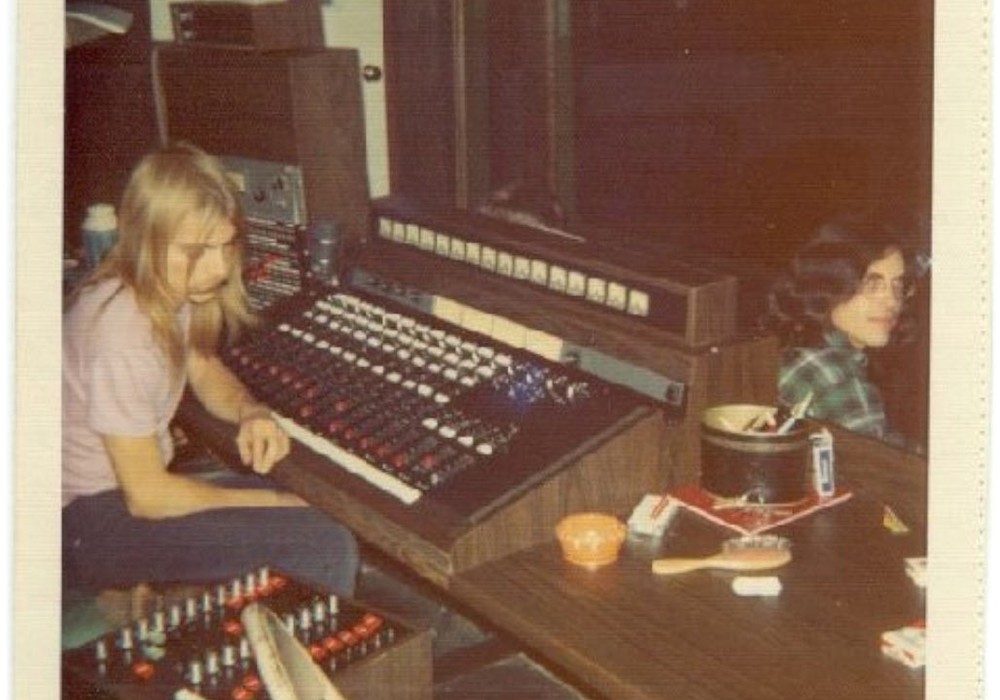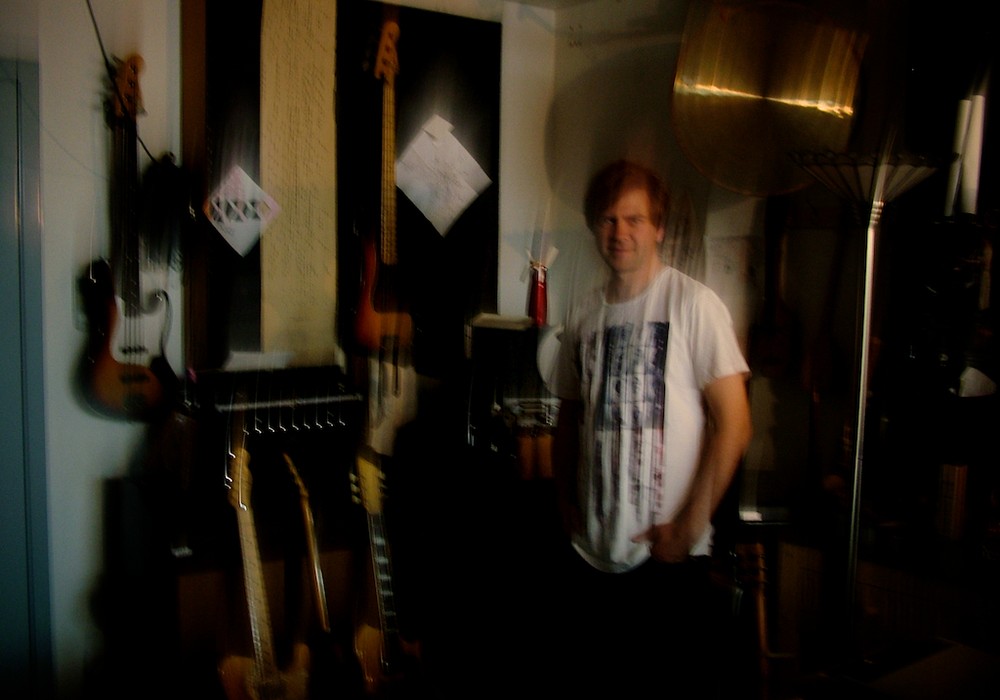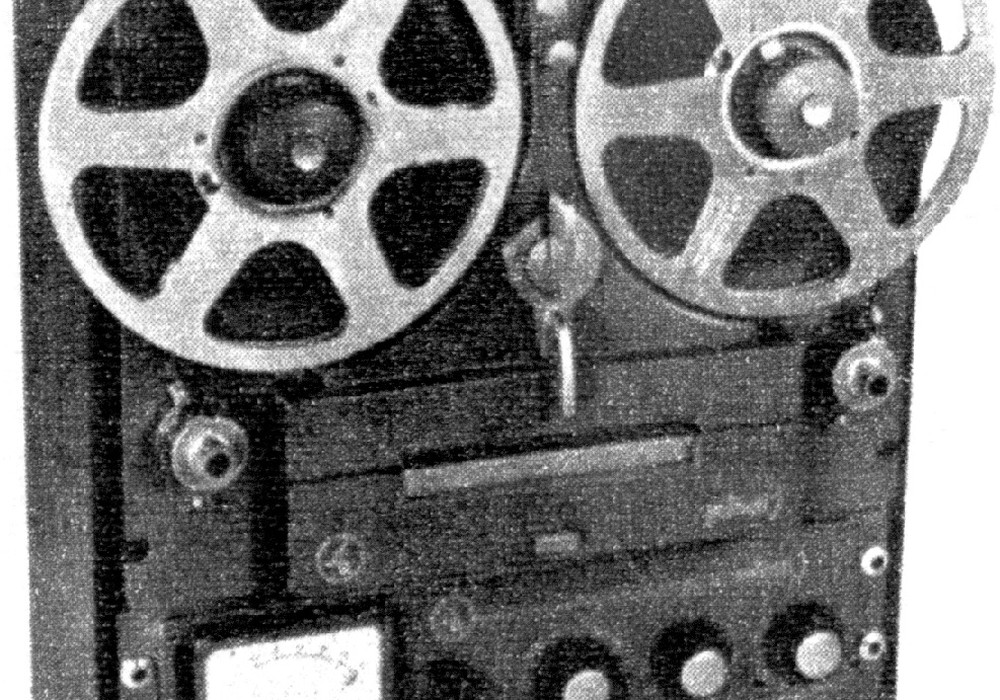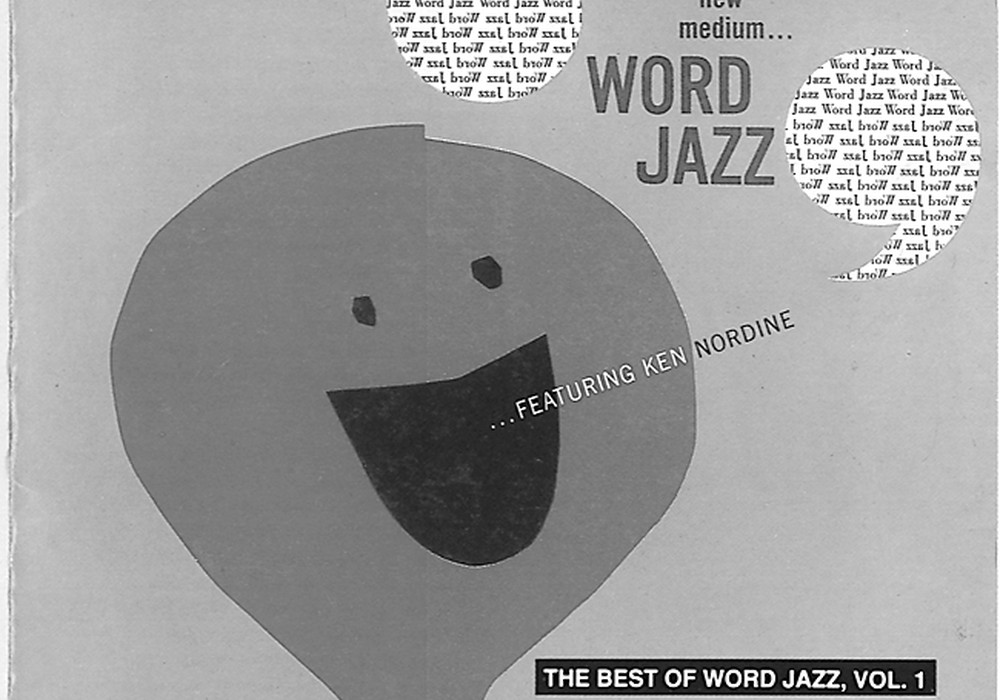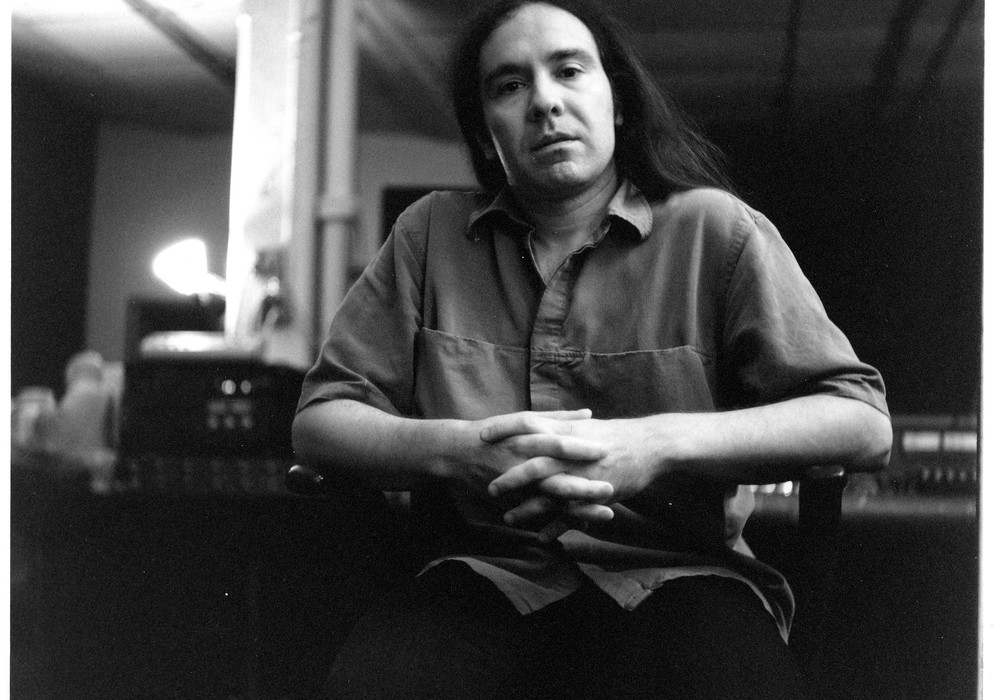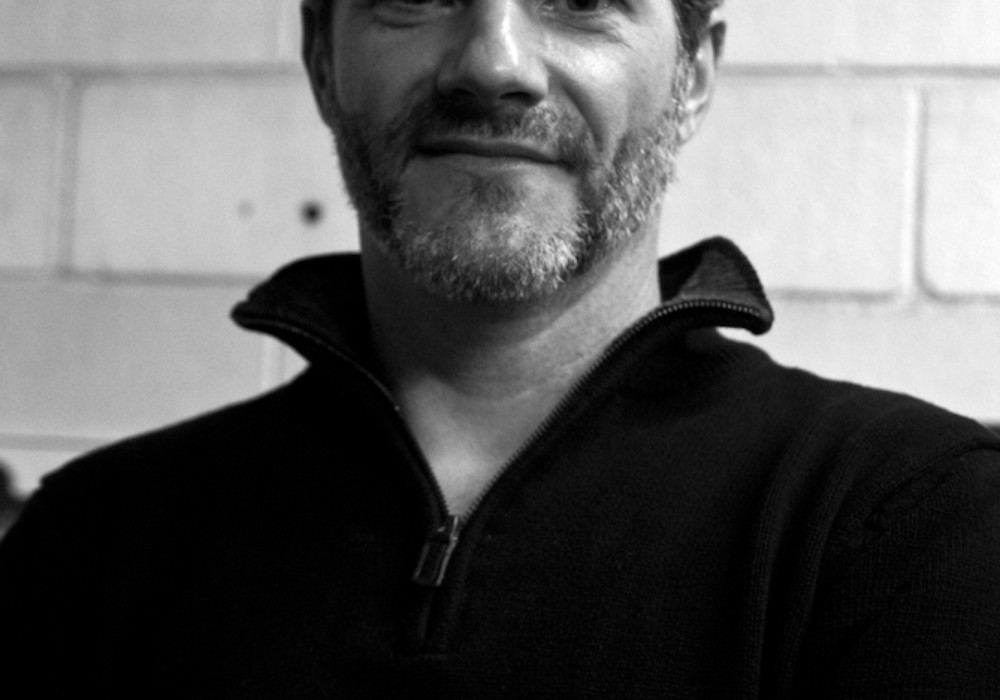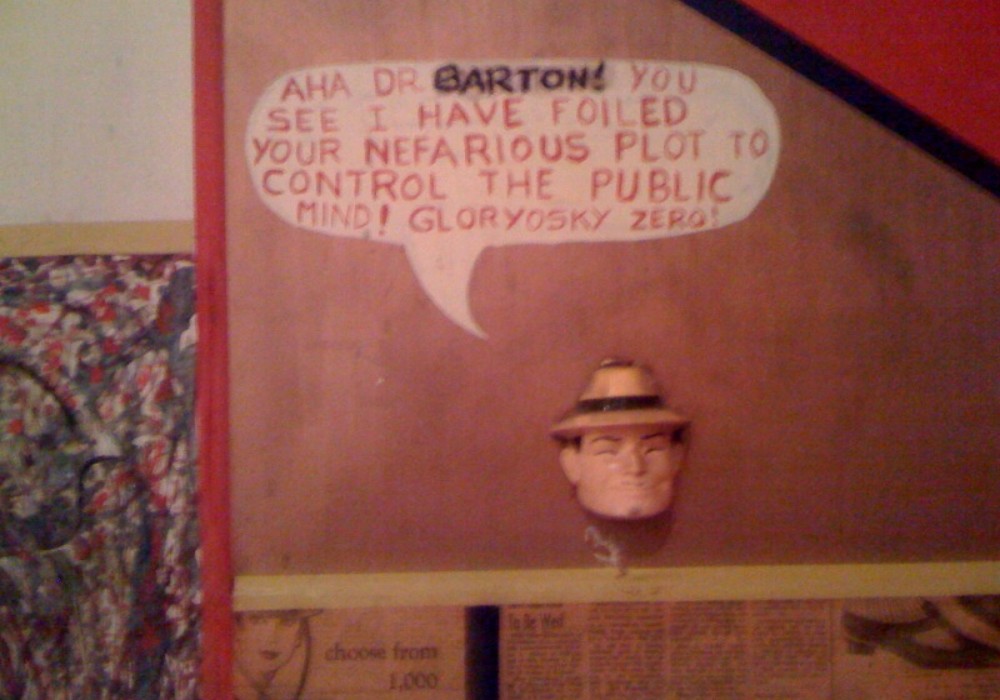Spoon are a great band from Austin, Texas. When I heard their first record, Telephono, in 1996, I was impressed with their songs and also the full, rocking, immediate sound of the record — as captured by engineer-supreme, John Croslin, on a 1" 8 track. In the years since they've done more work with Croslin, but they eventually built a home studio that gear-wise rivals many small commercial facilities. This studio was no small undertaking, and the records that resulted from it's inception, the Girls Can Tell LP and the Loveways EP, are sonically as interesting as their debut. During SXSW I wandered over there with Craig and Duncan to interview the core of the band, Britt Daniel (vocals/guitar) and Jim Eno (drums), about how this little building behind Jim's house became a studio and how they've put it to use.
LC: You've got an EP and an album out of this studio, and you've spent a lot more probably than if you recorded in a commercial studio. Did you guys have to sit down and hash out if this was going to be a viable plan — to buy all this stuff?
Jim: It just sort of evolved, but I do have the gear. Instead of paying a studio $500 a day, we've invested in our own.
LC: You did all your earlier stuff with John Croslin.
Jim: I think we kinda realized that we wanted to do some recording ourselves before Croslin moved. We rented an 8-track cassette, rented some ADATs. We were doing some recordings by ourselves, researching and checking things out. We were close to buying a 1" machine too.
LC: A one inch 8-track or 16?
Jim: I think it was a Tascam 1" 16-track.
Britt: We were looking at a lot of things, yeah.
Jim: We were talking to John Vanderslice [owner of Tiny Telephone studio] about what to get. About that time John Croslin decided he was going to move out to Tiny Telephone [in San Francisco] and he wanted a 24-track 2" there instead of a 16-track, so John's like, "Do you want the 16- track?" I'm lucky because there's a good tech here too. This deck breaks, and that's something that I hadn't thought about when I got it. Croslin told me about David Hough, who's the tech here in town. He's amazing — he's come over and fixed stuff, and aligned the 2" machine.
Britt: If he wasn't here, we'd be screwed.
LC: Vanderslice was a big fan of Telephono — he really liked the stuff you guys were doing with Croslin. It's probably what led him to hooking up with Croslin in the first place.
Jim: I got a call from him back in 1996. He called Austin and asked for Jim Eno, and was like, "Hey, I'm a big fan." I got this call out of the blue wanting to know how to get a hold of John. Then we met him in San Francisco.
LC: So you got John's tape deck from Tiny Telephone...
Jim: Right. So we had a 16-track 2" [Ampex 1200] and a Mackie 1202. We were, "I don't know if this is going to work." So then I looked around Austin for a real console. A guy that needed to move to Portland for some reason — he was sleeping on people's floors and this was the only thing in his storage area — I just made him an offer.
LC: It's a Trident 24.
Jim: It's got a 96 point patch bay — everything goes back to a punch point.
LC: At the same time were you looking for a house?
Jim: I had this house before. This room was originally a real estate office — it had low ceilings. We tore out the ceilings and put this beam up, we built a room inside a room, so there are walls all the way around for soundproofing.
LC: Is it pretty quiet outside?
Jim: Yeah, it's pretty quiet. You can hear the bass a bit.
CS: Do the neighbors ever complain?
Jim: No.
LC: Cool, they're scared.
Britt: We're the thugs of the neighborhood.
Jim: We need to upgrade the AC. We use this little wall unit here. We recorded the Loveways EP over the summer and we were leaving the air on because it was unbearable.
Britt: Had that background noise.
Jim: We would test the vocals — "Britt can you hear that?" Then play it back — "It's not too bad." You could hear the AC in the background, it was just too hot.
LC: You have a computer here.
Jim: Before I had the 2" I did have Pro Tools. I had the Audio Media III card, and I then upgraded to Pro Tools III.
LC: You were talking about just using Pro Tools before acquiring this...
Jim: Then you hear this thing [the 16-track] and it's amazing. So now what we use it for is when we run out of tracks, we'll fly stuff over to Pro Tools and have a SMPTE track.
Britt: But really what we use Pro Tools for the most is a good effects box.
LC: Really?
Britt: We end up using it more for that than anything else.
Jim: The reverbs and stuff — you record enable a track and send it through the reverb and send it back out on the output.
CS: You don't even use it to record, it's just using it for the plug-ins.
Jim: Exactly, just using the plug-ins. And I use the gates and the side chains a lot too.
CS: Are you using the computer after you mix to DAT or are you flying stuff into the computer to make CDs?
Jim: Both. On "This Book is a Movie" we used different parts of the song and collaged it together. We had the mix to DAT, then we threw it into the computer. We also used it on "Chicago at Night." That's the song where we had two mixes and we didn't like either of them, and so we took...
Britt: ...it was probably the third or fourth time we mixed the song, we never were getting it right.
Jim: So we took the left channel of one and the right channel of the other and threw it in here [Pro Tools] and lined them up. It wasn't right, one was longer then the other of course. I used time compression on one of the tracks. If you listen to it, it's actually one mix on the right and one mix on the left.
Britt: When we took it to get mastered, that was the last song on the record, and John Golden was mastering all day long. We were having a good time, and when that one came on he said, "You're doing something different here." [laughing] That song was one of the few that we did on 24-track, so we couldn't mix it cheaply here. We weren't doing it for an effect — we were doing it because we didn't have money to go mix anymore.
CS: You were kind of stuck with it.
Britt: We had these versions... "You know it would be funny if we could take the left of the mix that Craig Ross did, and I like the right of the mix that Mike McCarthy did, if we could somehow combine these two." It's pretty good, it does some weird things.
Jim: When we got it synced up we were like, "Wow! It worked"
Britt: We only did two on 24-track — I guess we didn't like the way either of those came out.
LC: Where did you do that at?
Britt: Basic tracks were at Music Lane.
Jim: And then we mixed them at Hit Shack "A" room and then at Brooklyn Bridge.
LC: What prompted doing the tracks at Music Lane?
Jim: It was before we had a lot of this recording gear and Croslin was still in town, so we did a couple of songs with him.
LC: Who is Mike McCarthy [Tape Op #94, who co-produced Girls Can Tell with the band]?
Jim: He did the ...Trail of Dead records.
Britt: He's doing the next ...Trail of Dead record. He's lived here for a long time. Right now he's living in Nashville, but he's coming back to do the ...Trail of Dead record. He does a lot of Nashville stuff. He's really good. He's got an attitude problem, but he knows that.
LC: We can print this?
Britt: Oh yeah.
CS: How many of the tracks on Girls Can Tell were done here and mixed here?
Jim: Everything but two songs.
CS: Did you guys do the mixing or was it an outside person?
Jim: Mike McCarthy was helping engineer and helped produce it, so it was all three of us.
LC: How do you set up in here when you're going to start doing basic tracking for a song when you have an engineer/producer here?
Jim: Well, usually — for the Loveways EP it was just me and Britt, and we had someone else help mix it. What we usually do is go direct on a guitar so you don't get the bleed. I'll pull the kit out a little bit and we'll get drum sounds.
LC: What do you run the guitar through for the direct sound? Do you use the Pod or something or just DI it?
Jim: Just DI it — the Calrec's have a direct input.
Britt: We won't even record it.
CS: Oh, so you're not recording it, it's just a reference for the drums?
Jim: Exactly. On "Chips and Dip" we had the amp out in the room a little bit, and we were like, "Yeah, lets get some bleed," so we did the entire song, recorded the drums and guitar — ended up not using the guitar track and then recorded everything else on top of it. I guess when we were mixing it or near the late recording stage we found that the 2" had a problem and was slowing down. It was a capstan problem. So the problem was that the guitar — the one song where we were going to have bleed in the room — was out of tune with the rest of the tracks.
Britt: It starts out in tune and then it goes out.
LC: Like you recorded the song slowing down or something?
Britt: As it was recording it's just minutely slowed down at one particular part of the song, and we didn't notice.
Jim: If you listen to the song Britt overdubbed a bass at the end.
Britt: We weren't going to have any bass on that song.
Jim: It's just to cover it up so that the bass comes in right when the guitar starts going out of tune.
CS: Do you ever use one of those little SansAmps for guitar DI?
Jim: Actually, I just bought a SansAmp and a Reamp. We were playing around with throwing a drum mix through the SansAmp and bringing it back.
LC: The Reamp really helps get the levels so it doesn't crap out.
Jim: It sounds really good. We've tried to take stuff right out of the board and go through effects pedals.
LC: It's not even so much a level thing, it's just the wrong impedance.
Jim: Anyway, that's how we'll do drums. Usually we'll throw the bass in the little room [a closet], mic it up, and play through the speakers — just here out in the room. We do guitar a lot of the time in there with just a close mic. Also what we'll do is keep the amp out in the room, have a room mic and mix the two together. That's a little hard — that's where it would be nice to have a control room.
LC: When you're tracking, if Mike's here helping you — does he have a pair of headphones on?
Jim: Yeah.
Britt: For the drum sounds you just have to record it and listen back and see if it sounded good.
CS: You could spend six hours getting drum sounds.
Britt: Yeah, you spend a little bit extra time, but it's a lot cheaper than going somewhere else.
Jim: And plus then we don't overdo the EQ to tape. It's like, let's try to get good sounds to tape, without EQing a lot.
LC: That's a traditional, safe approach. Plus it's a 2" 16 track, so you get pretty good-sounding drums when you use that.
CS: Do you find yourself playing around with trying different levels of how hard you're hitting the 16-track, to see what's coming back?
Jim: Actually, not a lot. A lot of times I'll set the mics up and I'll be playing and I just look over at the meters and then run over to the mic pre and adjust it.
CS: Do you ever find that the meter's too hot — I'd better play lighter?
Jim: No, I never do that. I always try to play as hard as I'm going to play. A lot of times then when we start recording it is a little louder.
LC: What kind of work schedule do you try to stick to, to get this done?
Britt: Well, there was three weeks, then I went on a solo tour.
Jim: And since Mike was doing other projects we had to stick to it. There were three weeks that were really hard, and then a couple of other weeks after Britt's solo tour.
LC: Do you guys take time off work to do something like that?
Jim: Usually they'll come in around noon and I'll come in at five after I get off work.
Britt: I wasn't working then.
CS: So you have a real job?
Jim: Yes.
CS: How much of your "real" job income is put into gear?
Jim: All of it. [laughs]
Britt: And some of his wife's too! Did you tell them about how we recorded the piano tracks for the album?
Jim: No, the way we started doing the record — we had this recording space, and I didn't have the 2" yet — so we rented the 8-track 1", that we recorded Telephono and Soft Effects on. We did 8 songs using that. Britt had some piano parts that he wanted to put on there. We didn't have a piano at the time, so we did a dump of a mix to his 4-track, he broke into the UT [University of Texas] practice rooms with a couple of mics — and set them up. Didn't you go once with a condenser mic but didn't have any phantom power so you had to come back?
Britt: Yeah!
Jim: So he recorded them on his 4-track and threw them into Pro Tools and flew them back onto the 8-track. Well, everything was not in time. The 4-track recorded slower, so I spent a couple of days editing 4 bars at a time — syncing it with the 1" and then flying it back.
LC: You'd think at that point it would be cheaper to buy a piano and put it in the back.
Jim: [laughing] We'll never go through that again. It's funny when all these things were happening, I'm sitting here editing and talking to Britt, and we're having all these "Tape Op moments".
Britt: Like when the reel jumped off of the tape machine and ripped in half in the middle of "Take the Fifth". On the 8-track, when you hit [the] stop button — it was going really fast. It would just jump off the reels and we didn't figure out this thing with the stop button until half way through.
LC: Were you supposed to shuttle it with the fast forward and rewind button?
Jim: We don't know what we're doing Larry. We just hit stop you know! [laughing] Jim: So right in the middle of "Take the Fifth" there was this crinkle — the tape was just totally stretched — and we listened back and this snare drum just drops out, non-existent — everything drops out for half a second. It was right over the snare drum, so during the mix — we threw another snare into our little sampler, and as we were mixing it, I flew the snare in.
Britt: There were many struggles, many hardships to overcome in making this record.
Jim: So we were really stressed out, and then we hit the stop button again, and the tape crinkled, like maybe a foot. And we were like, "Oh no not again!" We were rewinding the entire reel, we had no idea where it was. We put the reel back on and were listening right before the song fades out — the crinkle goes by and you can hear it and then the next song starts. It happened to be right in the middle of two songs. We were jumping up and down.
Britt: Then I put the sign up — "Do not touch."
CS: I see you have a lot of nice stuff in your rack, looks like you've made some good choices. Are you feeling the gear lust yet?
Jim: As far as wanting everything?
CS: Yes, if you see something you like — it's like you gotta have it.
Jim: Yeah. I talk to John Vanderslice a lot. You know the Tiny Telephone gear? He's like, buy good gear and you can resell it, and as long as you buy stuff that's going to hold it's value and sound good, then you're making good choices. He's been a really good help.
LC: Watch out for buying the newest things on the block.
Jim: Yeah.
CS: What kind of mics do you use?
Jim: Well on the record Mike McCarthy had a U67 that he bought from Bill Bradley that sounded great. Then he had two KM264s that we used as overheads a lot. Then he had a ribbon mic.
Britt: Which is the one you bought from him?
Jim: I bought some 421s — the black tom mics. Recently for Loveways I bought a Royer, the mono one, and I bought a Neumann 582H*, which is a large diaphragm.
Britt: It's from Bill Bradley.
LC: He does custom modifications on the mics?
Jim: Yeah. So this portion is from the '70s, I think, and that's an M71 capsule.
CS: How do you like that Royer?
Jim: Oh, it's great. The Loveways EP is pretty much those two mics, except for drums. We used 451s for overheads, the 421s on the toms, but mostly it was those two mics for everything else.
CS: Besides doing a track with John Vanderslice, have you done other bands here at all?
Jim: No, not really.
CS: Is Britt going to do a solo album?
Jim: Sure.
Britt: But Jim's not allowed in the room for that. [laughs]
Jim: I'll get calls in the house, "Jim — I got to patch this one thing — what am I doing?" I have a friend I was sort of testing a lot of this gear on. We have a lot people asking about it, but we're just really busy with work and we're touring now for the record.
CS: I'm sure with working and coming back here your putting a lot of time into it. How does your wife feel, having this recording studio so close to home?
Jim: She's very cool about it — very understanding. She said once, "It's better having you back here than at some other studio." At least I'm hanging out at the house still.
CS: And you can go home, it's right there.
Jim: Exactly. We eat here and the band practices here, which is just great.
LC: I've seen you live a couple of times recently and you guys seem to take a lot more care with the sound of your band than most.
Britt: Well I guess we really try to use a lot of space in our arranging and stuff. Maybe that's what your hearing.
LC: Do you take more care when your picking up drums and heads for yourselves?
Jim: Actually, Mike McCarthy said, "Try the coated Ambassador heads," which are thinner and brighter. I think they sounded really good for recording. They're the best!
Britt: Mike's always going on about the best. Mike is really a great producer, we kid around with him — we have a funny relationship. I think he's terrific.
CS: Do you think having your home studio is also changing the way you're approaching your writing?
Britt: Somehow we've always had the luxury of being able to spend a lot of time on our recordings. If we didn't have that, then yeah, I think we would sound a lot different. It's a totally different approach when you feel cramped for time — we've been lucky to have had ample amounts of time to work on this stuff.
LC: How did you have time when you worked with John Croslin — was he doing that out of his home studio?
Britt: Yeah. We did the first one at his home studio, and the EP at his home studio. So we had plenty of time. We would go over and work everyday after he got off work, or when we all got off work, and just spent a long time doing it. Then for Series of Sneaks, we had plenty of time because Jim was funding it.
Jim: We knew there was some interest.
Britt: We knew somebody was going to buy it. [Elektra did and promptly buried it -LC]
Jim: I didn't feel like I wasn't going to get money back. There were some nervous moments though.
CS: When did you start Girls Can Tell?
Jim: We started working on this record in April of 1999.
Britt: Finished it March of 2000, but then we still had to more mixing to do — that we did last Fall.
LC: So it took about a year?
Britt: But we weren't working on it non-stop that whole time. I went to New York for a while, then we came back to finish it up.
Jim: We did those 8-track sessions and then I dumped all 8 tracks to Pro Tools, and then I got the MM1200 and I dumped them back to 2" and we continued to overdub.
LC: What kind of ideas are you wanting to try out that you didn't get to do before?
Britt: I want to do some recording where we try to get a live take and do it all in this room. Find a song that's right for that and get a whole band in here and just record a whole backing track and then do the vocals later.
Jim: I want to try more of the engineering stuff, like you were talking about with the distortion and the SansAmp and sort of hotter drum mixes to tape.
D: Have you picked up things along the way from engineers you worked with?
Jim: Yeah, I paid quite a bit of attention to the later Spoon recordings with Croslin, and Mike McCarthy — I just got this board when I started recording with him. He was helping a lot in that area too.
LC: You just watch how he's using it.
Jim: Craig Ross mixed the Loveways EP — he was like, "Did you read the back page of Tape Op about fear?" He pointed that out to me. When you're scared of the gear, when you're scared of cranking EQs and other things — that's when you limit yourself.
LC: Did he take it a little outside of where you thought it was going to be?
Jim: I think so, yeah. The thing that comes to mind is the EP, because our bass player had quit. So it was me doing the drums and engineering, and Britt doing every other instrument. So it was really us two for two weeks hammering out this EP, because Merge wanted to release this thing. And you know how you're recording all the tracks and you have your levels set, you are used to hearing songs certain ways, and then it was really enlightening to bring Craig Ross in — he's got these really great crazy ideas. The third song on the EP is "Jealousy" and was very, very safe when we were recording it and he came in and it was just amazing. It was really cool to just sit back and see his perspective during mixing.
LC: Obviously you're more drawn more to the engineering side than Britt seems to be.
Jim: Yeah, I really like it.
CS: Do you see down the road, "Gee, when I'm tried of drumming," is this something you might consider doing?
Jim: I think I'll probably get tired of my day job before I get tired of drumming.
CS: You're going to become an engineer just by having to do it.
Jim: Yeah, right. I'd like to do that. I also have the luxury of not having to record people here to pay the bills. So I can record bands that I like and I'll probably keep doing that.
Britt: If they were good it would be great!
